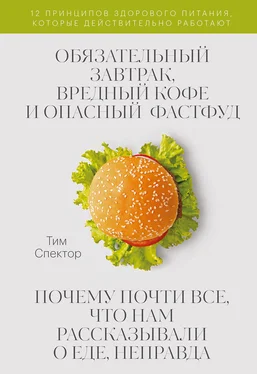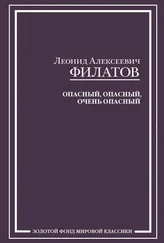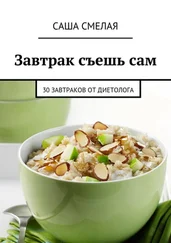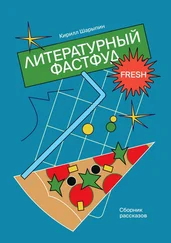Lantagne D. Household water treatment and cholera control // Journal of Infectious Diseases. 2018. Vol. 218. No. 3. Pp. s147–s153.
McCartney M. Waterlogged? // BMJ. 2011. Vol. 343. P. d4280.
Rosario-Ortiz F. How do you like your tap water? // Science. 2016. Vol. 351. No. 6267. Pp. 912–914.
Brezina E. Investigation and risk evaluation of the occurrence of carbamazepine, oxcarbazepine, their human metabolites and transformation products in the urban water cycle // Environmental Pollution. 2017. Vol. 225. Pp. 261–269.
Spector T. Identically Different. Weidenfeld & Nicolson, 2012.
Wagner M. Identification of putative steroid receptor antagonists in bottled water // PLOS ONE. 2013. Vol. 8. No. 8. P. e72472.
Huo W. Maternal urinary bisphenol A levels and infant low birth weight: a nested case-control study of the Health Baby Cohort in China // Environmental International. 2015. Vol. 85. Pp. 96–103; Gao H. Bisphenol A and hormone-associated cancers: current progress and perspectives // Medicine. 2015. Vol. 94. No. 1. P. e211.
EFSA. Bisphenol A: new immune system evidence useful but limited // EFSA Reports. 13 October 2016.
Iheozor-Ejiofor Z. Water fluoridation for the prevention of dental caries // Cochrane Database of System Reviews. 2015. Vol. 6. P. CD010856.
Jambeck J. R. Marine pollution. Plastic waste inputs from land into the ocean // Science. 2015. 13. Vol. 347. No. 6223. Pp. 768–771.
Ryan P. G. Monitoring the abundance of plastic debris in the marine environment // Proceedings Transactions Royal Soc. B. 2009. Vol. 364. Pp. 1999–2012.
Bartoshuk L. M. NaCl thresholds in man: thresholds for water taste or NaCl taste? // Journal of Comparative and Physiological Psychology. 1974. Vol. 87. No. 2. Pp. 310–325.
alcohol.org/guides/global-drinking-demographics/(2019).
Lachenmeier D. W. Comparative risk assessment of alcohol, tobacco, cannabis and other illicit drugs using the margin of exposure approach // Scientific Reports. 2015. Vol. 5. P. 8126.
Bruha R. Alcoholic liver disease // World Journal of Hepatology. 2012. Vol. 4. No. 3. Pp. 81–90; Jordaan G. P. Alcohol-induced psychotic disorder: a review // Metabolic Brain Disease. 2014. Vol. 29. No. 2. Pp. 231–243.
alcohol.org/guides/global-drinking-demographics/(2019).
St Leger A. S. Factors associated with cardiac mortality in developed countries with particular reference to the consumption of wine // Lancet. 1979. Vol. 1. No. 8124. Pp. 1017–1020; Di Castelnuovo A. Alcohol dosing and total mortality in men and women: an updated meta-analysis // Archives of Internal Medicine. 2006. Vol. 166. No. 22. Pp. 2437–2445.
gov.uk/government/news/new-alcohol-guidelines-show-increased-risk-of-cancer(8 January 2016).
Xi B. Relationship of alcohol consumption to all-cause, cardiovascular, and cancerrelated mortality in US adults // J. American College of Cardiology. 2017. Vol. 70. No. 8. Pp. 913–922.
Welch K. A. Alcohol consumption and brain health // BMJ. 2017. Vol. 357. P. j2645.
Sabia S. Alcohol consumption and risk of dementia: 23 year follow-up of Whitehall II cohort study // BMJ. 2018. Vol. 362. P. k2927.
Holt-Lunstad J. Social relationships and mortality risk: a meta-analytic review // PLOS Medicine. 2010. Vol. 7. No. 7. P. e1000316.
Wood A. M. Risk thresholds for alcohol consumption: combined analysis of individual-participant data for 599,912 current drinkers in 83 prospective studies // The Lancet. 2018. Vol. 391. No. 10129. Pp. 1513–1523.
Griswold M. G. Alcohol use and burden for 195 countries and territories, 1990–2016: a systematic analysis for the Global Burden of Disease Study 2016 // The Lancet. 2018. Vol. 392. No. 10152. Pp. 1015–1035.
Freeman A. L. Communicating health risks in science publications: time for everyone to take responsibility // BMC Medicine. 2018. Vol. 16. No. 1. P. 207.
Edenberg H. J. The genetics of alcohol metabolism: role of alcohol dehydrogenase and aldehyde dehydrogenase variants // Alcohol Research and Health. 2007. Vol. 30. No. 1. Pp. 5–13.
Ruiz S. M. Closing the gender gap: the case for gender-specific alcoholism research // Journal of Alcoholism and Drug Dependence. 2013. Vol. 1. No. 6. P. e106.
Vatsalya V. A review on the sex differences in organ and system pathology with alcohol drinking // Current Drug Abuse Reviews. 2017. Vol. 9. No. 2. Pp. 87–92.
Lloyd P. Deadly link between alcohol and breast cancer is “ignored by middleaged women who are most at risk of developing the disease” // Mail Online. 13 February 2019.
Queipo-Ortuño M. I. Influence of red wine polyphenols and ethanol on the gut microbiota ecology and biomarkers // Am. Journal of Clinical Nutrition. 2012. Vol. 95. No. 6. Pp. 1323–1334.
Chaplin A. Resveratrol, metabolic syndrome, and gut microbiota // Nutrients. 2018. Vol. 10. No. 11. P. e1651; Fan X. Drinking alcohol is associated with variation in the human oral microbiome in a large study of American adults // Microbiome. 2018. Vol. 6. No. 1. P. 59.
LeRoy C. I. Red wine consumption associated with increased gut microbiota α-diversity in 3 independent cohorts // Gastroenterology. 2019. Vol. pii: S0016–5085. No. 19. Pp. 41244–4.
de Visser R. O. The growth of “Dry January”: promoting participation and the benefits of participation // Eur. J. Public Health. 2017. Vol. 27. No. 5. Pp. 929–931.
Naimi T. S. Erosion of state alcohol excise taxes in the United States // Journal of Studies on Alcohol and Drugs. 2018. Vol. 79. No. 1. Pp. 43–48.
cdc.gov/alcohol/index.htm(2019).
Zupan Z. Erosion of state alcohol excise taxes in the United States // BMJ. 2017. Vol. 359. P. j5623.
Coley D. Local food, food miles and carbon emissions: a comparison of farm shop and mass distribution approaches // Food Policy. 2009. Vol. 34. No. 2. Pp. 150–155.
Saunders C. Food miles, carbon footprinting and their potential impact on trade // Semantic Scholar. 2009; AARES 53rd annual conference at Cairns, 10–13 February 2009.
Soode-Schimonsky E. Product environmental footprint of strawberries: case studies in Estonia and Germany // J. Environ. Management. 2017. Vol. 203. Pt. 1. Pp. 564–577.
Willett W. Food in the Anthropocene: the EAT-Lancet Commission on healthy diets from sustainable food systems // The Lancet. 2019. Vol. 393. No. 10170. Pp. 447–492.
Milner J. Health effects of adopting low greenhouse gas emission diets in the UK // BMJ Open. 2015. Vol. 5. P. e007364.
Читать дальше
Конец ознакомительного отрывка
Купить книгу












